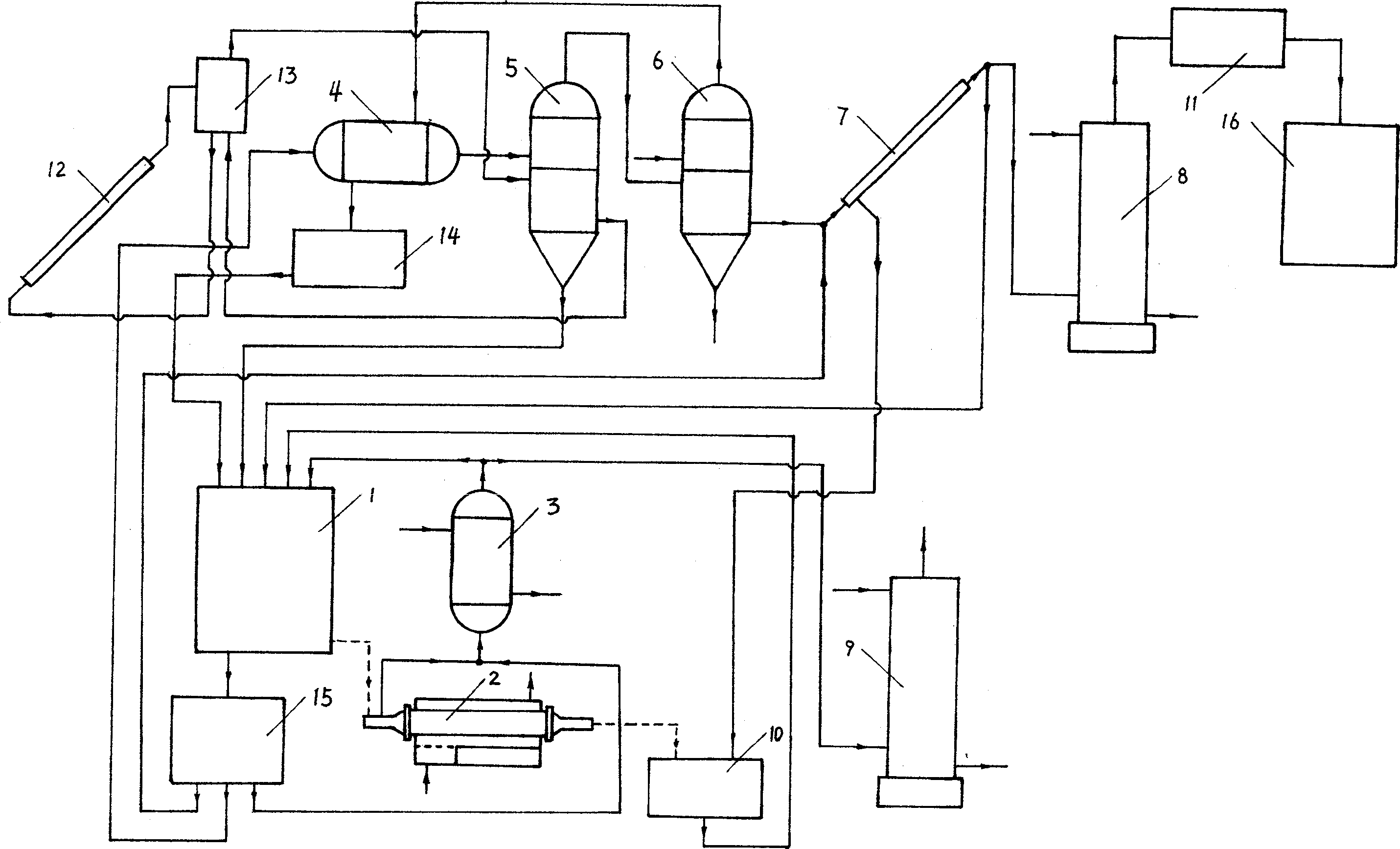Method for producing hydrogen gas and methanol using solar energy
A technology for the production of hydrogen and solar energy, which is applied in the fields of solar energy utilization and chemical engineering, can solve the problems of difficult storage of solar energy, and achieve the effects of obvious social value, huge economic and social benefits, and cost reduction
- Summary
- Abstract
- Description
- Claims
- Application Information
AI Technical Summary
Problems solved by technology
Method used
Image
Examples
Embodiment 1
[0043] Embodiment 1: Utilize solar energy to produce hydrogen
[0044] First, the basic principle of hydrogen production: the reaction of decomposing water into hydrogen and oxygen cannot proceed spontaneously, but mainly through the following four processes to chemically convert water into a compound that is easy to be photolyzed, and decompose it with light Among them, the compounds that are difficult to pyrolyze complete a hydrogen production cycle, and finally realize the forward reaction.
[0045] 1) Manufacture of salt: 6I 2 +6Ca(OH) 2 =5CaI 2 +Ca(IO 3 ) 2 ↓+6H 2 o
[0046] 2) Splitting of water:
[0047] 3) Release hydrogen:
[0048] 4) Release oxygen:
[0049] Second. The main production process of hydrogen production:
[0050] The main process of producing hydrogen includes: ① solar energy to produce water vapor; ② preparation and separation of salt; ③ moderate temperature hydrolysis of calcium iodide solution and preparation of hydroiodic acid; ④ prepara...
Embodiment 2
[0119] Utilize solar energy to produce the photolysis device that hydrogen methanol is useful, i.e. photolysis pool (7), combine with solar heat collector (12), promptly photolysis pool (7) is on, heat collector (12) is below, light The bottom plate of solution pond (7) is light-transmitting glass, is parallel with heat collector (12) upper panel light-transmitting glass and has heat insulation interval. The two are combined to make the sunlight that cannot be photolyzed enter the absorber of the heat collector (12) and become heat energy, thereby improving the utilization rate.
Embodiment 3
[0121] In the method of utilizing solar energy to produce hydrogen methanol, the water vapor produced by the solar heat collector (12) is first input into the steam turbine generator set to generate electricity, and then enters the evaporator (5). The electric energy produced by the generating set passes through the electric furnace to provide heat for the calciner (2) to calcinate the calcium iodate. Moreover, when there is no sunlight, the electric light source composed of high-brightness light-emitting diodes is powered to maintain the photolysis reaction, so that the whole process continues uninterrupted.
PUM
 Login to View More
Login to View More Abstract
Description
Claims
Application Information
 Login to View More
Login to View More - R&D
- Intellectual Property
- Life Sciences
- Materials
- Tech Scout
- Unparalleled Data Quality
- Higher Quality Content
- 60% Fewer Hallucinations
Browse by: Latest US Patents, China's latest patents, Technical Efficacy Thesaurus, Application Domain, Technology Topic, Popular Technical Reports.
© 2025 PatSnap. All rights reserved.Legal|Privacy policy|Modern Slavery Act Transparency Statement|Sitemap|About US| Contact US: help@patsnap.com

